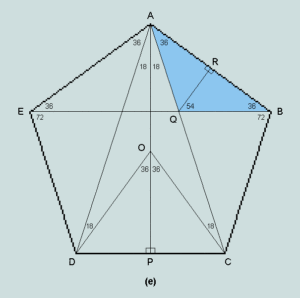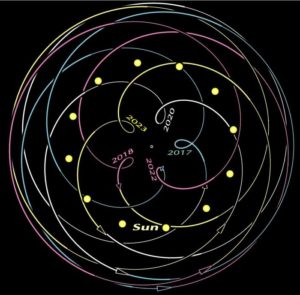When I was a kid, my Grandma told me that our family is related J.S. Bach, the great classical composer. This may be related to why I pursued a career in music and why I consider acoustics and music theory to be a window into the inner workings of nature’s sublime architecture. In the back of my heart, I feel what many composers and musicians throughout history have felt: that music is itself an expression of the hidden workings of the heavens and the most exalted means of bringing grace and beauty into the world. Bach’s music exemplifies this truth expertly. But Bach was not only a brilliant composer, he was a expert in organ construction, a master of acoustics and was believed to have composed music in 432Hz in some cases.
Bach was no doubt familiar with the work of his contemporary, Joseph Sauveur, who was called the father of musical acoustics. Sauver is known as being the source of the first reference to the tuning of middle C at 256 oscillations per second. Throughout the history of the development of acoustics and music theory, the mechanics of sound and pitch were seen as being closely linked to the inner mechanisms of nature. The movement of the planets, the cycles of the seasons, and the mathematics of nature’s architectural forms all embody principals that can be seen and heard in the structure of music. Its no wonder that music, like the building of sacred temples, churches and cathedrals, musical hymns have been central to the expression of humanity’s longing for the divine.
We’re big fans of the 432Hz A. But we’re not alone in our fascination of the 432Hz tuning. A growing number of people around the world are learning about the auspicious harmony of 432Hz, otherwise described as C=256hz. Thanks to films like “Sonic Geometry: The Language of Frequency and Form” and organizations like The Schiller Institute, the scientific pitch 432Hz A is steadily growing in popularity.
While the philosophy, mathematics and geometry around scientific pitch can seem complex, the simple pleasure of listening to 432Hz music provides us with a direct, felt sense of its potency. Though its only 8 hertz flat or -32 cents from the standard concert pitch, this shift in pitch has a major effect on the harmonic structure of music.
 In the time of Beethoven, the renowned acoustician Ernst Chladni know for the Chladni cymatics plates, published a textbook on the theory of music which explicitly defined C=256 as the scientific tuning. Up through the middle of the present century, C=256 was widely recognized as the standard “scientific” or “physical” pitch. Before the international standard pitch was set at 440, many composers, musicians, and instrument makers used 432 as the scientific standard.
In the time of Beethoven, the renowned acoustician Ernst Chladni know for the Chladni cymatics plates, published a textbook on the theory of music which explicitly defined C=256 as the scientific tuning. Up through the middle of the present century, C=256 was widely recognized as the standard “scientific” or “physical” pitch. Before the international standard pitch was set at 440, many composers, musicians, and instrument makers used 432 as the scientific standard.
The reason for this was simple. Using mathematics, acousticians noticed that nature and the basic forms of geometry correspond with 432 cycles per second. The pentagon, for example, a shape that provides us with the PHI ratio, and represents the structure of man, gives us angles of 144, 108, 72 and 36 degrees. If you continue to double, following this pattern, you’ll reach 432 in the sequence. These angles align perfectly with not only the lower octaves of D and A in music, but they also correspond with the resonance of Venus which shifts 144° at each inferior conjunction of its orbital path. This example of scientific tuning is astonishing, but this is just one of countless other examples.
angles of 144, 108, 72 and 36 degrees. If you continue to double, following this pattern, you’ll reach 432 in the sequence. These angles align perfectly with not only the lower octaves of D and A in music, but they also correspond with the resonance of Venus which shifts 144° at each inferior conjunction of its orbital path. This example of scientific tuning is astonishing, but this is just one of countless other examples.
All of the fundamental geometries, the platonic solids from which all natural forms are made, the golden ratio and literally every aspect of the natural world are in resonance with the scientific pitch. In “brightening” the concert pitch to 440, we moved music away from an acoustic resonance with universal structures.
The standard 440 pitch has its own merits to be sure. “Brightening” allows for tonal clarity in large orchestral arrangements allowing individual elements to jump out of the mix. And, its been considered to provide a lighter and more elevated mood. But when it comes to sound healing and neuro-acoustic meditation programs we feel the scientific pitch is essential.
To align with the natural world and cultivate greater resonance with the cosmos, listening to music in A=432Hz is instrumental.
To learn more, check out this article : The Foundations of Scientific Musical Tuning by Jonathan Tennenbaum
Here’s a track to listen to in 432Hz:
[embedyt] https://www.youtube.com/watch?v=oda9uJ1r1GM[/embedyt]


